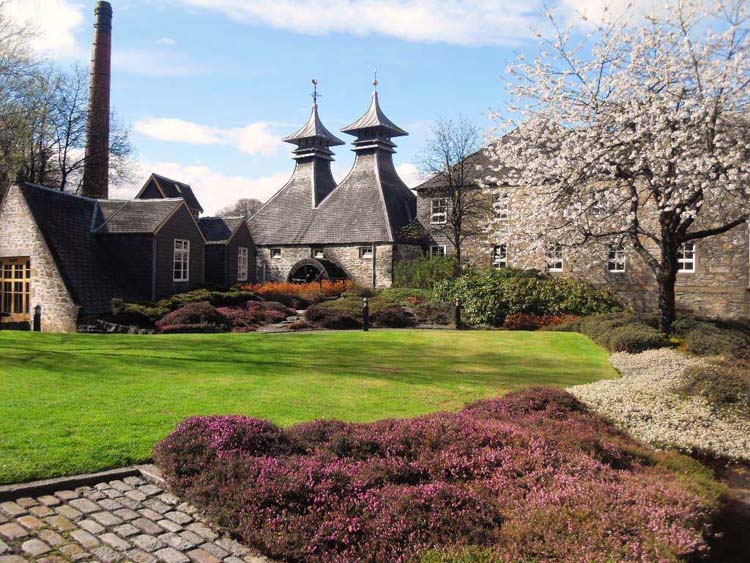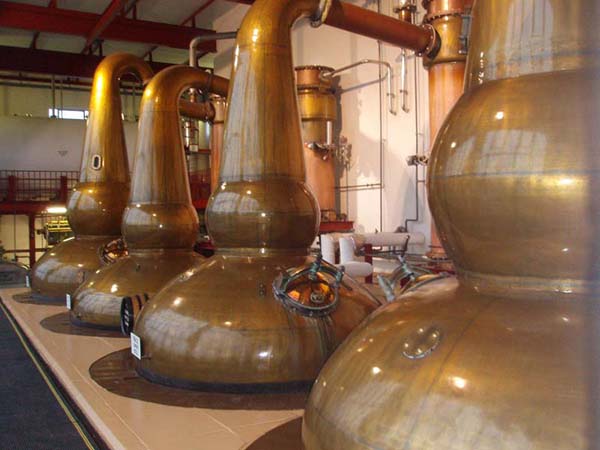Scotch Whisky - Scots Connection
OF all the products associated with Scotland, Scotch Whisky reigns supreme. To anyone, anywhere in the world, Scotch can only mean one thing –Scotch whisky. The romance associated with its origins combined with its pleasurable reputation and acknowledged health-giving properties have given it a worldwide and iconic status.
 |
Strathisla Distillery |
And seemingly it all began when early Christian missionaries - followers of St. Columba - came to Scotland some fifteen hundred years ago, although the earliest actual reference to the spirit being distilled in Scotland is to be found more recently in the Exchequer Rolls of 1494 when Friar John Cor of Lindores Abbey in Fife ordered “eight bolls of malt wherein to mak aqua vitae.'
Ever since, scholars and authors, when writing of Scotland, have born testimony to the remarkable qualities of Scotland's national alcoholic beverage. Indeed, for the majority of those living in the Highlands, it was and remains a staple for survival. Writing of the Isle of Lewis in 1695, Martin Martin, the Macleod of Macleod's factor, commented that 'the air is temperately cold and moist, and for the corrective, the natives use a dose of trestarig or uisgebeatha.'
In his masterly work on Scotch whisky, Professor David Daiches writes that by the seventeenth century, Scotch whisky was already established as the characteristic Highlands of Scotland spirit; that in the eighteenth century, in spite of the continuous troubles with the excise after the failure of the 1745 Jacobite Rising, the art of whisky distillation was flourishing in the Highlands and soon spread to the Lowlands.
As early as 1597, it had become so widespread that the Scottish Parliament passed and act to restrict the practice. Needless to say, this had little effect on the remote crofters, artisans, farmers and weavers for whom the production of whisky was an immensely lucrative sideline. Excise Duty was introduced by the Scottish Parliament in 1644, fixed at 2s 8d per Scots pint (approximately one third of a gallon) of aqua Vitae or other strong liquor, but made little impact.
The introduction of this tax simply added to the long and colourful tradition of smuggling, and the practice of home-distilling continued regardless with small stills producing smooth malt whiskies which could be sold to passing cattle drovers, and the large scale producers making spirit for the London markets. No doubt Coinneach Odhar, the Brahan Seer, must have had this in mind in the mid-seventeenth century when he prophesied that:”The time will come when dram shops will be so plentiful that one may be seen at the head of every plough furrow.”
In 1707, the terms of the Treaty of Union between Scotland and England trod carefully when it came to legislation, and while a tax on malt was introduced in England, Scotland was exempted. This point of difference was regarded as having such importance that the Articles of Union actually highlighted the provision that malt should not be taxed in Scotland.
In 1713, when the British Government did decide to extend the English tax to Scotland, it was met with immediate and massive resistance and failed to be implemented. When the British Prime Minister Sir Robert Walpole finally forced it through in 1725, there was an uproar culminating in what came to be known as the Malt Tax Riots.
And the result was simply a widespread outbreak of whisky smuggling, which was actually encouraged by the majority of Scottish landowners. Whisky smugglers were not considered to be in any way criminal and were invariably held in high esteem and protected by the local populations. Of the excisemen employed to curtail such activities, even that archetypal Englishman Dr Samuel Johnson was moved to comment that they were “wretches, hired by those to whom excise is paid.”
By 1777, Edinburgh had eight licensed stills and, according to excise officers of the day, four hundred illicit stills. However, the consumption of whisky was by then very much the indulgence of the lower orders. Toddy – the combination of whisky, sugar and hot water – was a common drink, whereas the great houses served claret and hock, possibly brandy, rum and port, in their cellars.
In 1816, the Small Stills Act which licensed stills with a maximum capacity of 40 gallons, was marginally successful in reducing the smuggling trade, but in 1822, according to an Inland Revenue report, “Illicit distilling is so widespread that half the spirits actually consumed are supplied by smugglers.”
Up until this time, so rumour had it, virtually every household in the Highlands had its own still. The Statistical Account for Scotland of 1798 had observed that for the majority of people working on the land, distilling was almost the only way in which they could convert victual into cash for the payment of rent and servants.

























